|
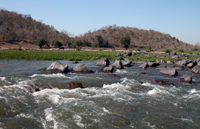 |
Narmada River
where the Shiva
Lingams originate |
 |
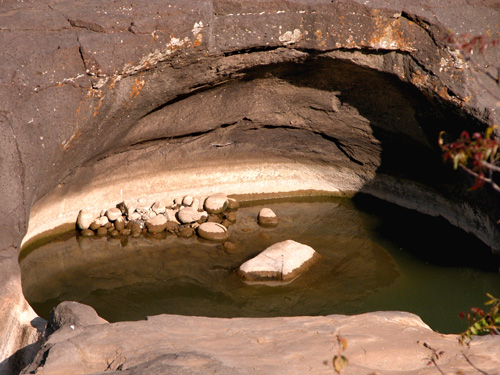
A "cradle" with the natural Shiva Lingams
polished over centuries by the waters of Narmada river
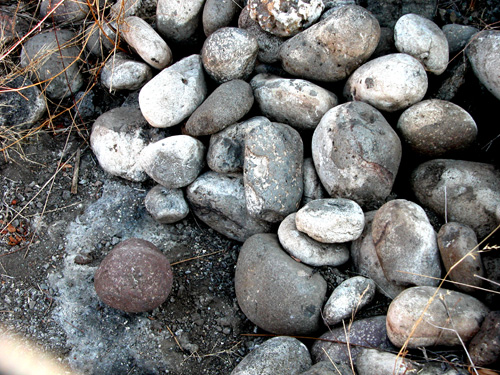
Stones or Shiva Lingams?
|
Narmada River
Shiva Lingams |
|
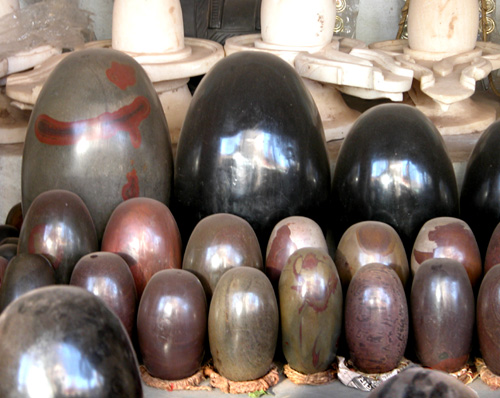
The sacred Shiva Lingams from Narmada River
|
| It is in the areas 300 km northeast of Mumbay
that you find the sacred Narmada River Shiva Lingams. The Lingams are sold as
far away as in Varanasi, where shops specialize in these particular Shiva Lingams. The Lingams are considered Swayambhu (selfgrown/made) but
seems to a large extend to be polished and refined to a perfect oval shape.
The naturally smooth formed stones are
also known as "Banas". They are made of cryptocrystalline quarts and
the rare unique markings on them are regarded very auspicious in the
Shaivite tradition - the tradition worshipping Lord Shiva.
The Brihadeeswara Temple in
Thanjavur, Tamil Nadu has one of the largest Bana Shiva Linga in
India. |
|
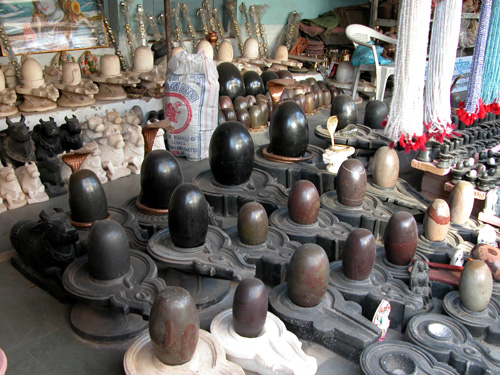
A variety of Shiva Lingams in a shop at the Omkareswara Jyotir Lingam Temple
|
|
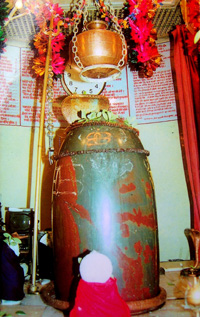
Huge Narmada Shiva Lingam in the
Shankaracharya Temple, Srinagar, Kashmir |
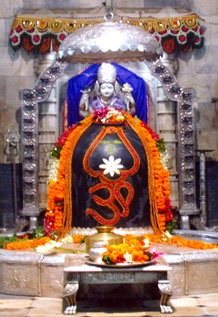
The Somnatha Jyotir Shiva Lingam
a black stone variety |
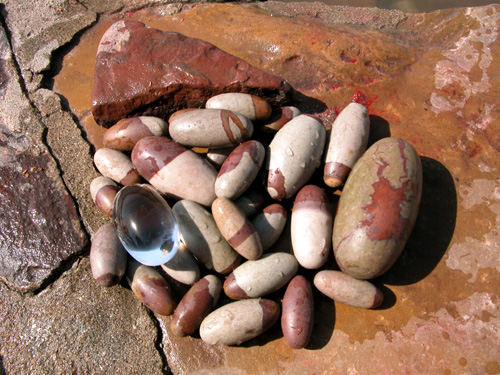
Small Shiva Lingams after being sanctified by the waters in the Narmada River
at the Sangama of Omkareswara.
The rare unique markings on them are regarded very
auspicious.
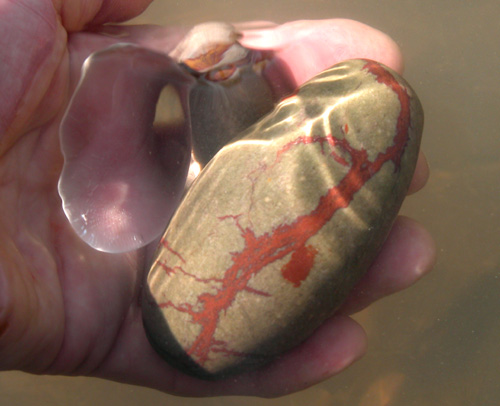
Narmada Shiva Lingam which has touched all the twelve Joytir Lingams in India,
sanctified in the water at the Sangama in Narmada River at Omkareswara
|
Narmada River |
|
Narmada River is, according to Hindu
mythology, one of the seven most sacred rivers of India*. It was born out of Lord Shiva's sweat when he performed his cosmic Tandava
dance**.
Narmada means - "One who endows with bliss".
The Narmada is believed to be embodiment of purity and a legend
tells that every year the polluted Ganges comes in the guise of a dark woman and
takes a purifying dip in the Narmada. Narmada's waters absolves man from all his
sins and by the mere sight of the river he is purified .
Rising in the Amarkantak plateau, where the
Vindhya and Saptura Mountain ranges meet, the Narmada flows westward for 1247 km across the state of Madhya Pradesh and lastly
to Gujarat before it enters into the
Arabian Sea aprox. 50km north of Surat, Gujarat.
The banks of Narmada are lined with temples and
bathing Ghatts. It flows through beautifull landscapes, holy cities, from
Amarkantak ("Neck of Shiva"), which is the source of the river through Mandla,
Dhuandar Falls (the river drops 25m at this place), Bhedaghat (marble rocks), Hoshangabad,
Omkareshwar (OM-shaped island with two of the famous Jyotir Lingam temples,
Omkareswara and Amaleswara) and Maheshwara.
Sugarcane, cotton and bananas grow
along the river.
See also:
www.en.wikipedia.org/wiki/Narmada_river
|
|
* The seven most holy rivers of India are: Ganga, Narmada, Yamuna,
Godavari, Saraswati, Sindhu & Kaveri |
|
** Lord Shiva in the aspect of Nataraja, the
Cosmic Danser performs the Tandava dance, which symbolises natures cycle of
evolution and transmutation. |
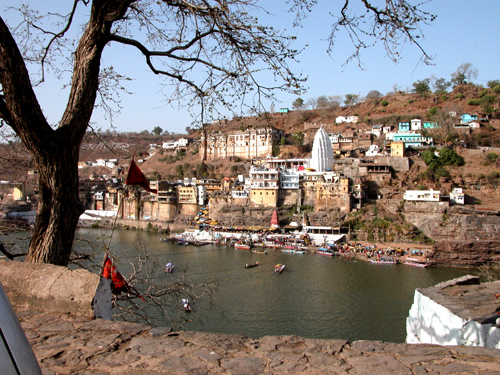
Narmada flowing through Omkareswara.
The white tempeltower is a very famous and sacred Shiva Temple,
housing the Omkareswara Jyotir Lingam.
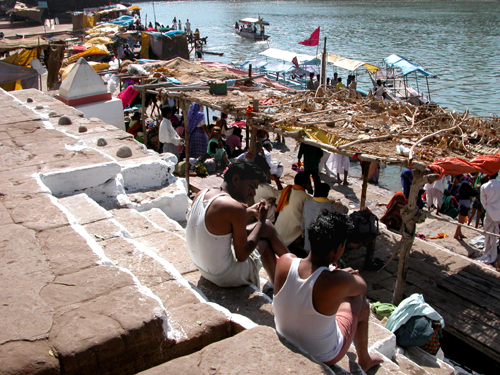
Life on the Ghatts
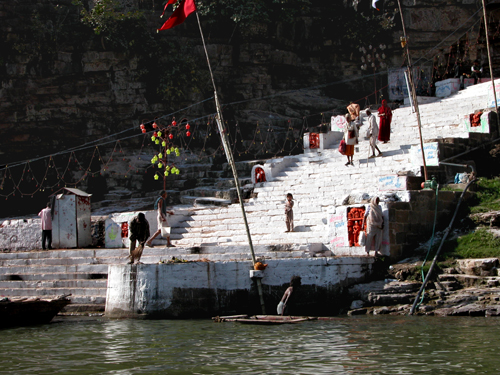
Ghatts along the river
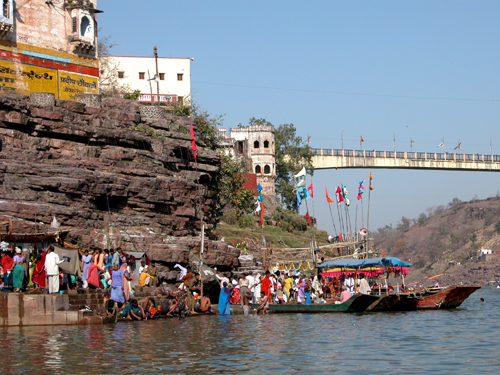
Boat rent
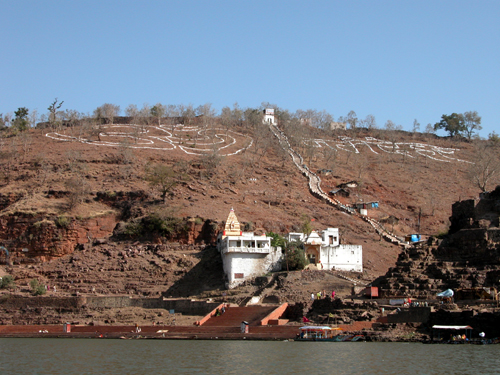
"Omkara" on the slopes
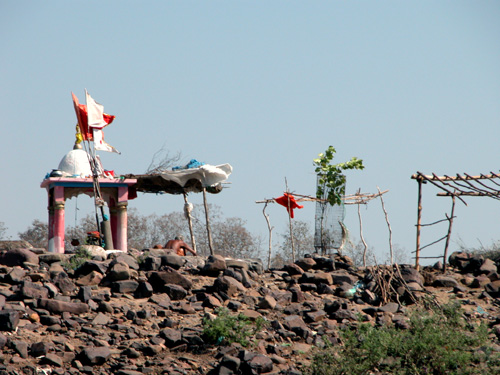
Pilgrim shelters along the banks
|
Narmada River Parikrama |
|
The Narmada Parikrama (circunambulation) is
most meritorious act that a pilgrim can undertake. Many sadhus and pilgrims
walk on foot from the Arabian Sea at Bharonch, along the river, to
the source in Maikal Mountains and back along the opposite bank of the
river. It's a 2.600km walk and it takes about two, three years. |

Sadhus on Parikrama
Life at the Sangama
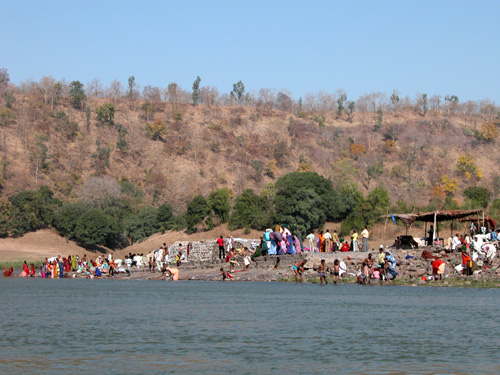
The Sangama at Omkareswara
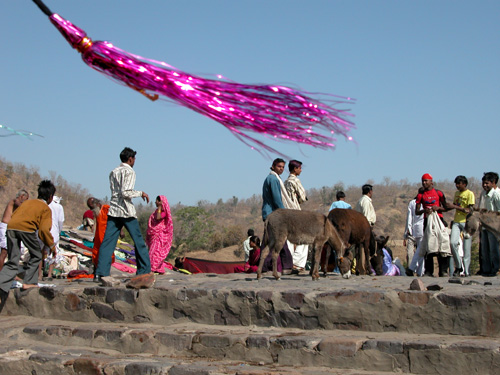
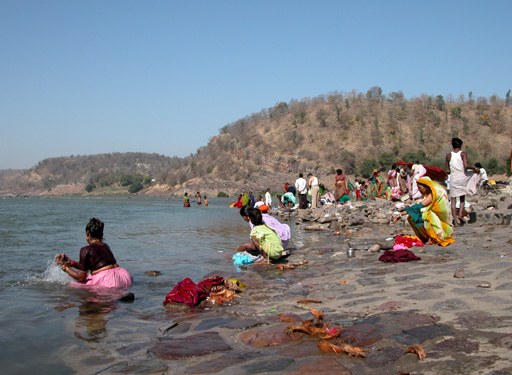 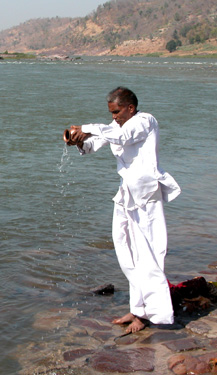
Offerings and ritual baths at the Sangama between Narmada and a tributary
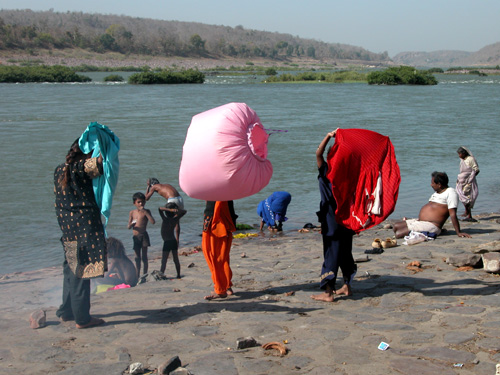
Drying petticoats ...
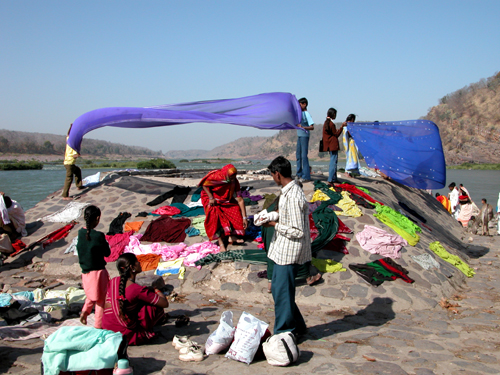
... saris after the ritual bath
|
The Narmada River
Raksha ritual |
|
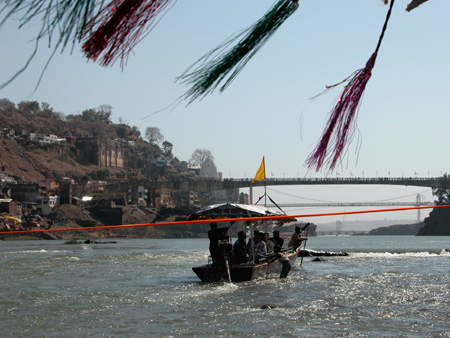
The Raksha (thread) connecting
the island of Omkareswara to the mainland |
|
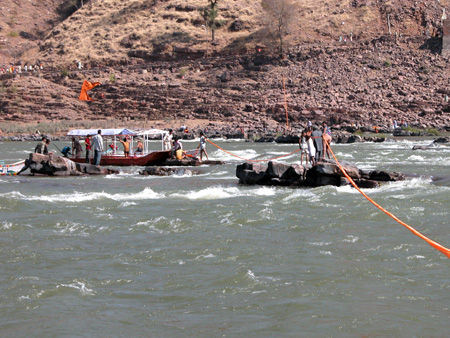
Raksha coming from the bank of Omkareswara ... |
|
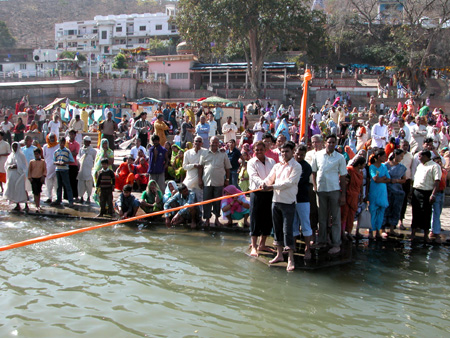
... and going to the mainland |
|
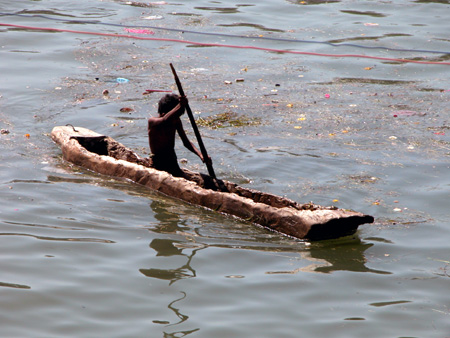
All kinds of boats pass under the Raksha |
|
The Narmada Dam controversy |
| Since mid 1980's an ambitious scheme to dam the Narmada has been embroiled in
controversy. The Narmada Valley Authority claim that the "Sardar Sarovar Dam" will
bring irrigation and drinking water to millions of people. Environmental
activists opposing the dam, says that the dam will inundate some 37.000 ha of
forest, and displace more than 200.000 villagers, most of them poor tribal
people whose distinctive culture and means of livelihood will be wiped out along
with their lands. The Supreme Court of India has recently ruled that work on the dam
can continue. When completed, it will be the second largest in the world, after
the "Three Gorges Dam" in China.
See also: www.narmada.org |
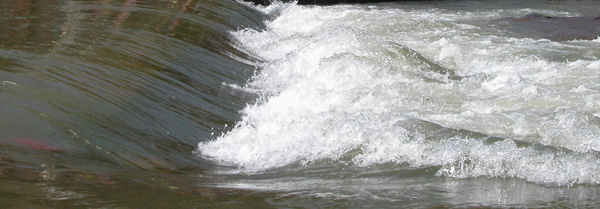
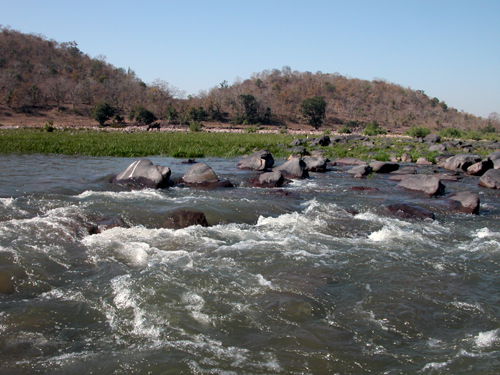
The river at Omkareswara in its natural flow
|
mukti4u2@gmail.com |
 |
www.mukti4u2.dk |
mukti4u2.dk
► created by
BP
|

